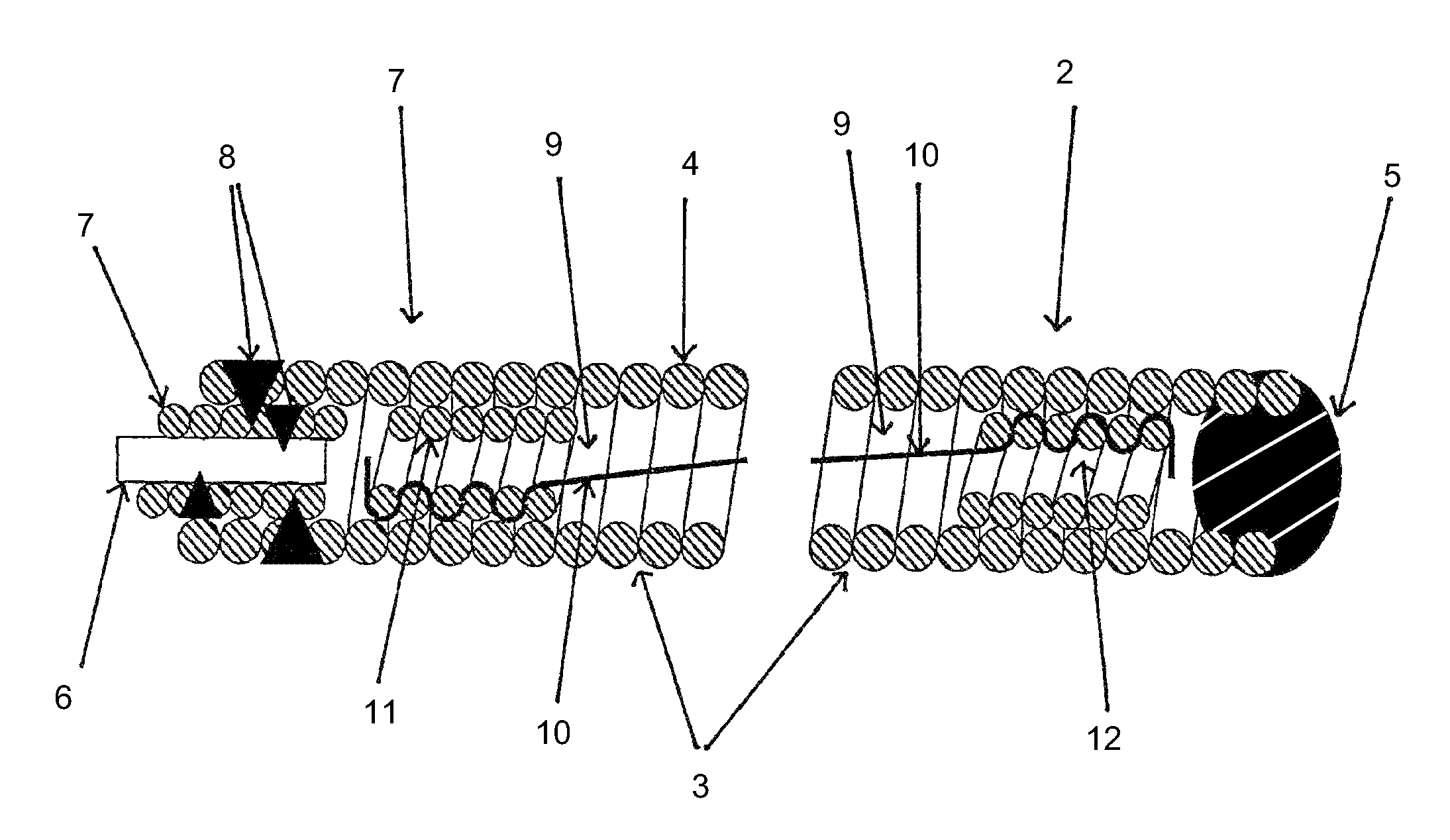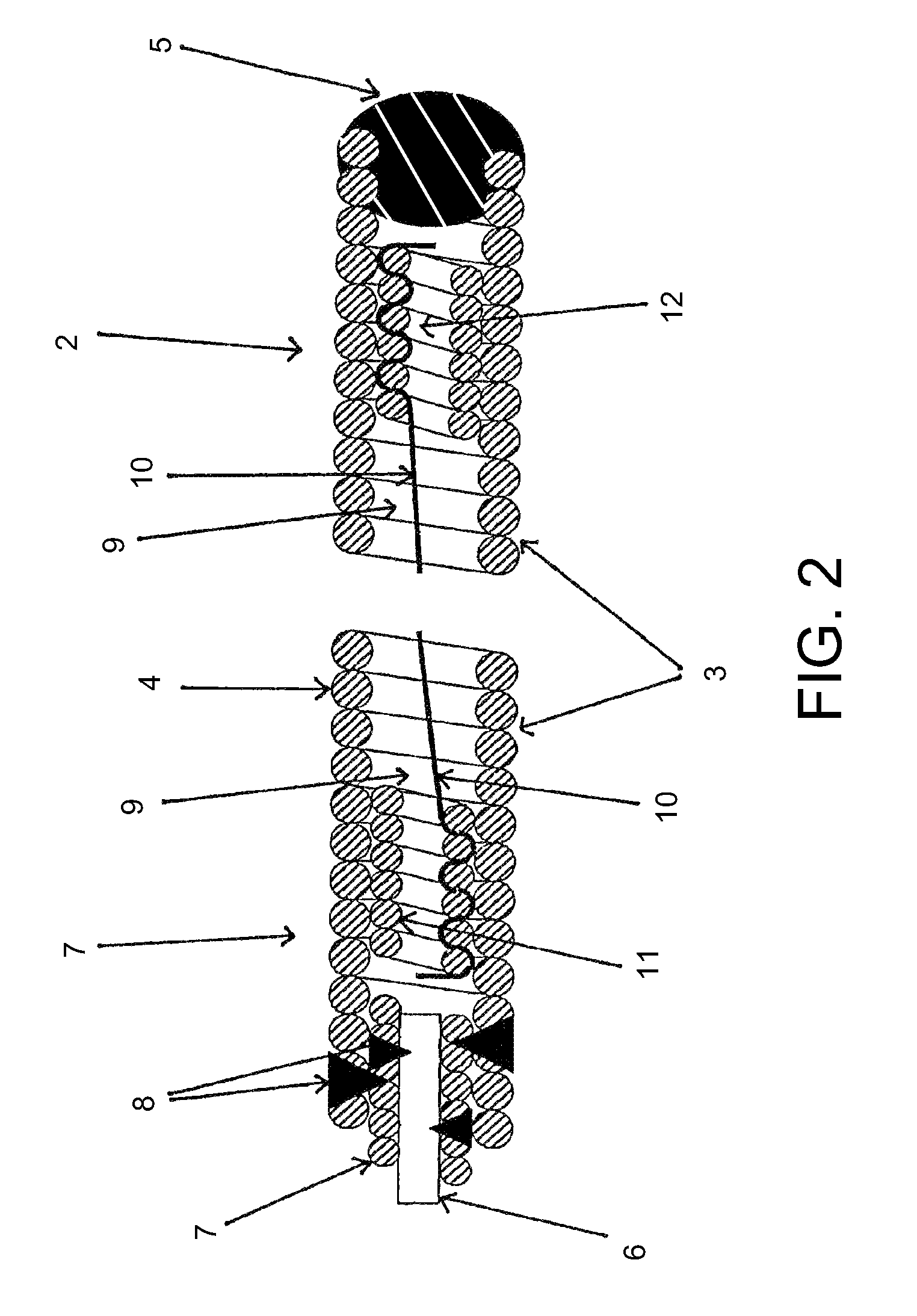Micro-spiral implantation device
a micro-spiral and implantation device technology, applied in the field of micro-spiral implantation devices, can solve the problems of threatening embolism, polymer threads may suddenly break, and the micro-spiral is not restricted, and achieves the effects of less rigidity, high stress, and no angular displacemen
- Summary
- Abstract
- Description
- Claims
- Application Information
AI Technical Summary
Benefits of technology
Problems solved by technology
Method used
Image
Examples
Embodiment Construction
[0034]From FIG. 1 the proximal area 1 and the distal area 2 of an occlusion helix 3 can be seen shown as a longitudinal section. The occlusion helix 3 shown here consists of a wire comprising a plurality of windings 4. The distal tip 5 of the occlusion helix 3 is rounded with a view to minimizing aneurysm traumatizing risks. Proximally to the occlusion helix 3 there is a severance element 6 which extends through a microcoil 7 additionally incorporated into the occlusion helix 3. The connection between the additional microcoil 7 and the occlusion helix 3 and between severance element 6 and additional microcoil 7 is made by providing joining points 8, for which purpose various techniques may be employed such as soldering, welding, bonding or mechanical joining methods. The severance element 6 is designed so as to be electrolytically corrodible to enable the occlusion helix 3 by applying a voltage to be released and placed into the aneurysm.
[0035]A polymer thread extends through the lu...
PUM
 Login to View More
Login to View More Abstract
Description
Claims
Application Information
 Login to View More
Login to View More - R&D
- Intellectual Property
- Life Sciences
- Materials
- Tech Scout
- Unparalleled Data Quality
- Higher Quality Content
- 60% Fewer Hallucinations
Browse by: Latest US Patents, China's latest patents, Technical Efficacy Thesaurus, Application Domain, Technology Topic, Popular Technical Reports.
© 2025 PatSnap. All rights reserved.Legal|Privacy policy|Modern Slavery Act Transparency Statement|Sitemap|About US| Contact US: help@patsnap.com



